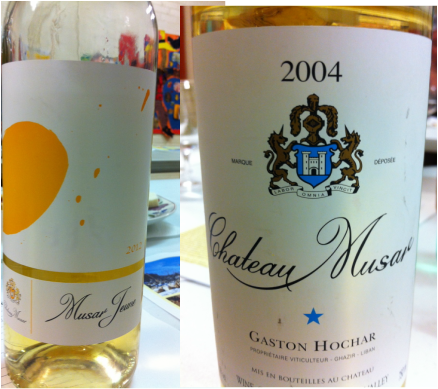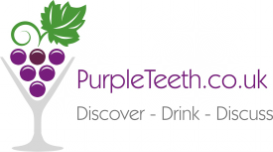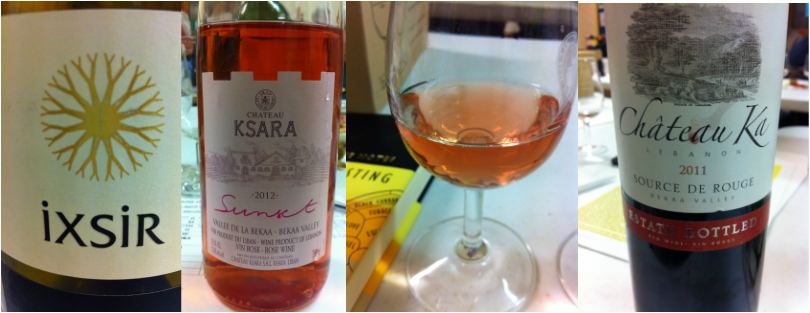Luckily enough, I'm part of a local wine group that meets monthly. It's a great way for me to continue my wine education, as we take it in turns to explore regions or varietals and share our knowledge.
Our April session featured wine from Lebanon. It's certainly not a country you can arrange a tasting for by popping into your local supermarket, but a country with a rich tradition in wine even if we're more apt to think of Beirut and bombings, or Human League songs when Lebanon comes to mind. But Lebanon, on the Eastern shores of the Mediterranean, produces around 7 million bottles of wine a year, most of it from the Bekaa Valley. Around 2 million of those bottles come to the UK. But is it any good? Should you be seeking it out?

They explained that the Bekaa valley is a high plain where most vineyards are planted at between 1000 and 1200 metres, making it similar to Mendoza in Argentina. The summers are hot and dry, but night-times are much cooler because of the altitude. There's clay and limestone soils with gravel and rich terra rossa, so given there's a good water supply from snow melting from the high mountains aside the valley, it sounds like fairly ideal for production of wine from local and international grape varieties.
As is customary, we started with white wines. Our first wine was the Musar Jeune 2012 blend of Viognier, Vermentino and Chardonnay, a rather unusual blend which is £9.95 retail and 13.5% abv. It was very drinkable with a candied lemon nose, honeysuckle and pear on the palate, full bodied with a sherbet finish. Musar Jeune is a kind of "diffusion label" of Chateau Musar. Designed for drinking young, and by young wine drinkers the wines are fresh, fruity and have no contact with oak. Compared with the Chateau Musar white from 2004, it's a lot more accessible. Made from indigenous grapes such as Merwah and Obeideh it's extremely rich and intense. Full bodied with almost a nose of boot polish, this was definitely too exotic for me. It's supplied in the UK by Majestic, who describe it thus: "Deep golden hues from a glass that exudes baked apple, almond, brioche, apricot and vanillin aromas. A buttery, rich, honey textured and wine with vanilla, butterscotch, roasted stonefruit and spice." This certainly wasn't my impression of the £18 wine. It seemed like licking an oak barrel and had hints of wet wool. Very odd and not one I'll rush to drink again.
Moving on to Rosé, we sampled Chateau Ksara, Sunset 2012 (13.5%, £10.95). Ksara is the oldest winery in Lebanon with a 150 years of winemaking. It was a very fruity and very dry rosé made from 60% Cabernet Franc and 40% Syrah, so a bit heftier than some rosés with spicy strawberry and red berry notes and good, bright acidity, it would make an interesting accompaniment to sushi.
And then it was time for the reds. Chateau Ka 2011 (14%, £12) is a blend of Cabernet Sauvignon, Merlot and Syrah, it's mid-bodied and savoury with plenty of lightening herbaceous notes on top of the fruit. I gave it two ticks on the vening. I think that means I liked it a lot!
And then it was time for the Musars. Chateau Musar was established in 1930 by Gaston Hochar at the tender age of 20. His inspiration was the 6000 year winemaking history of Lebanon’s Bekaa Valley and also his time in Bordeaux. In 1959, he stepped aside for his sons Serge and Ronald. The wines have been compared to Bordeaux, Rhone and Burgundy, but they're actually unique. It's been tough going to keep these wines going. In 1989 both the winery and the Hochar family home were hit by shelling in the Civil War. The cellars were even used briefly as bomb shelters to help local people. That's a lot of story for a wine. We started with the Hochar Pere et Fils, the 2nd wine of the Chateau (13%, £12). This 2008 is a blend of Cinsault, Carignan, Cabernet Sauvignon and Grenache is aged in French oak for 9 month, creating a rich, spicy wine with plum and cherries, but I found it very acidic with some leathery and liquorice notes and a smoky, slightly oxidised smell. It's similar to a good old-fashioned Reserva Rioja. Musar was the first Lebanese winery to be certified as organic, and wines are made with the minimum of sulphur and are not fined or filtered so benefit from decanting.

The Chateau Musar 2005 (14%, £20) and 1999 (14%, £28) are made from Cinsault, Carignan and Cabernet Sauvignon. The Wine Society claims the 2005 will go down as one of the greatest vintages while the 1999 features in "1001 Wines To Try Before You Die" (link below). Good dark fruits, lots of leathery notes and spice along with plenty of acidity. For the serious wine lover, it's definitely worth trying Musar at least once but you'll want to drink it along with a nice steak rather than on its own.
If you've drunk Lebanese wine and enjoyed it, or perhaps even visited the Lebanon and it's wineries, why not share your views or photos on our Facebook page? Hopefully we've inspired you to try something new. At least there's no shelling at your local M&S this weekend. And if you'd like help setting up a wine club, Purple Teeth would be happy to come and present some wines for you, to get you started.
Cheers!
| | |




 RSS Feed
RSS Feed
